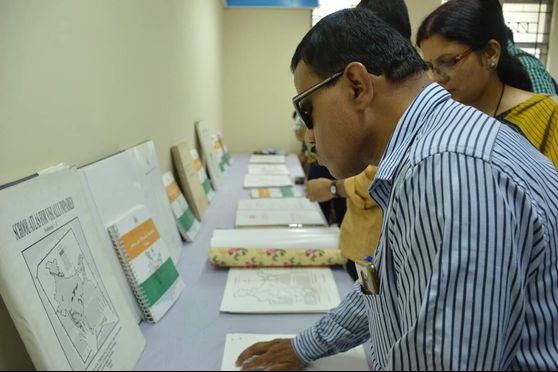NATMO introduces advanced Braille maps for visually impaired students


The National Atlas & Thematic Mapping Organisation (NATMO), a body operating under the ministry of science and technology, has designed advanced Braille maps for visually impaired students using digital embossing technology.
The digital embossing technology eliminates the need for printing plates, moulds, chemicals and solvents. This process minimizes emission of pollutants or waste and reduces overall energy usage.
This innovative technology has been introduced, designed and implemented for the first time in India by NATMO. The technology not only allows speedy production of maps but also helps in making Braille maps that remain durable for years. It was noticed that maps produced earlier with an older technology were quick to lose their shine and contours.
NATMO has received an overwhelming demand for Braille Atlases and has also been recognized as the only pioneer organisation in this domain. This has encouraged NATMO to prepare Braille Atlases in Hindi and other regional languages. Also, this organisation has started the preparation of Braille Atlases of different states of India in consultation with experts.
With the support from the department of science & technology, NATMO has developed Braille Unit with state-of-art cutting edge solution such as Artificial Intelligence (AI) and spot UV coating methods for digital embossing solution. The complete process undergoes different stages with end-to-end solution on the digital platform.
Braille Atlas of India were distributed in 323 schools as a proof of concept (PoC). Along with this publication, NATMO also organised Braille workshops and quiz contests to spread awareness among the visually impaired student, teachers and trainers. From 2017 to 2019, a total of 1,409 students from 97 schools of 22 states and union territories participated in the Braille workshops and quiz contests.
First, the thematic maps are prepared on digital platforms using GIS technology. Then the hard copy products are laminated with soft sheets. The soft laminated maps are placed onto the embossing digital devices with perfect registration for spot UV coating. Soft copy maps are masked in the area targeted for embossing. AI technology is used for 3D embossing to get the final Braille maps. The map sets are bound spirally for hassle-free use by the visually impaired students.